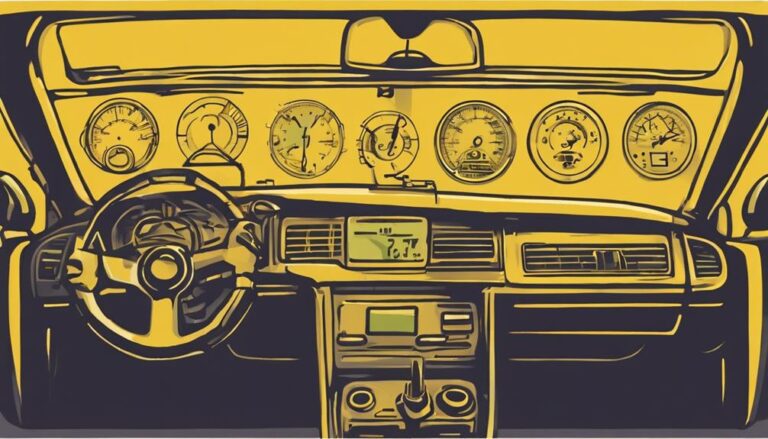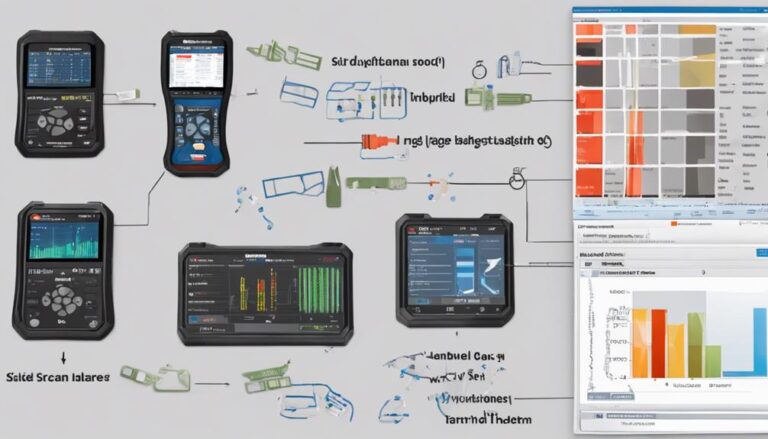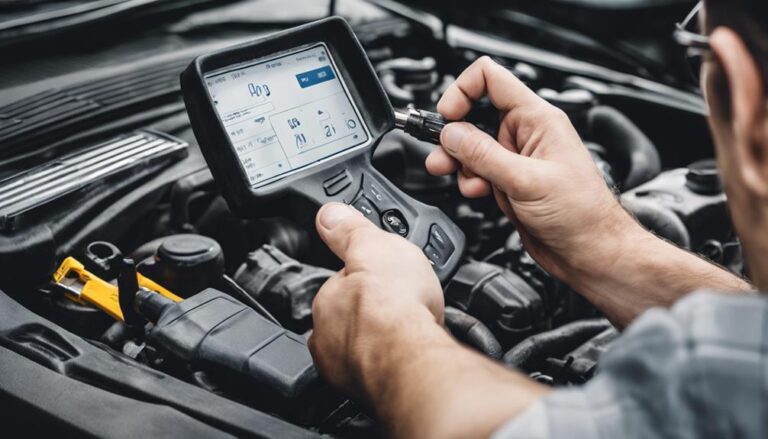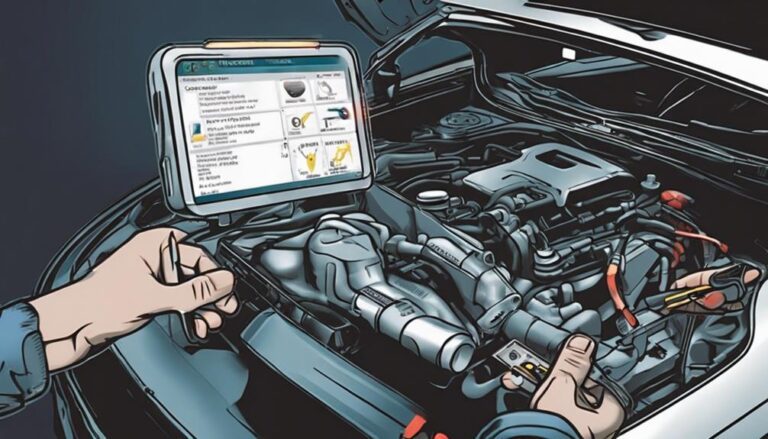Understanding Check Engine Light & Passing Emission Tests
When your Check Engine Light illuminates, it's a signal that your vehicle's onboard diagnostics have detected a potential issue. Understanding the reasons behind this warning can save you from unexpected breakdowns and costly repairs.
Knowing how to interpret this crucial indicator can be the key to passing emission tests smoothly and keeping your vehicle in top condition. Let's explore the intricacies of the Check Engine Light and how it can impact your vehicle's emissions performance, ensuring you stay ahead of any potential problems.
Key Takeaways
- Promptly addressing the Check Engine Light prevents damage and maintains performance.
- Proper diagnostics and maintenance are crucial for addressing Check Engine Light concerns.
- Passing emission tests is vital for reducing pollutants and ensuring legal compliance.
- Utilizing diagnostic tools and maintenance strategies aids in diagnosing and resolving Check Engine Light issues.
Check Engine Light Basics
When encountering the Check Engine Light in your vehicle, promptly addressing the issue is essential to prevent potential damage and ensure optimal performance. The Check Engine Light, also known as the Malfunction Indicator Light, serves as a crucial warning system that alerts you to possible engine or emissions system concerns. Ignoring this indicator can result in costly repairs and decreased fuel efficiency. The light can signify a wide range of problems, varying from minor issues like a loose gas cap to more severe engine malfunctions.
Proper engine diagnostics and timely vehicle maintenance are key when dealing with the Check Engine Light. Swiftly identifying and resolving the underlying cause indicated by the light is vital not only for your vehicle's health but also for successfully passing emissions tests. By addressing the problem promptly through accurate engine diagnostics and appropriate maintenance, you can prevent further damage and ensure your vehicle operates at its best potential.
Emission Test Importance
Understanding the significance of emission testing is paramount for ensuring compliance with environmental regulations and maintaining vehicle performance. Emission tests play a crucial role in reducing harmful emissions and meeting environmental standards. Here are five key points highlighting the importance of emission testing:
- Environmental Impact: Emission tests help reduce the amount of pollutants released into the atmosphere, contributing to cleaner air and a healthier environment.
- Regulatory Compliance: Passing emission tests is often a requirement for vehicle registration renewal in many states, ensuring vehicles meet the necessary emission standards.
- Public Health: Emission tests help identify and address issues that can impact air quality, safeguarding public health from harmful pollutants.
- Vehicle Maintenance: Regular emission testing promotes proper vehicle maintenance, aiding in the early detection of engine problems that could affect performance and emissions.
- Legal Consequences: Failing an emission test can lead to legal restrictions on driving the vehicle until it meets the required emission standards.
Diagnosing Check Engine Light
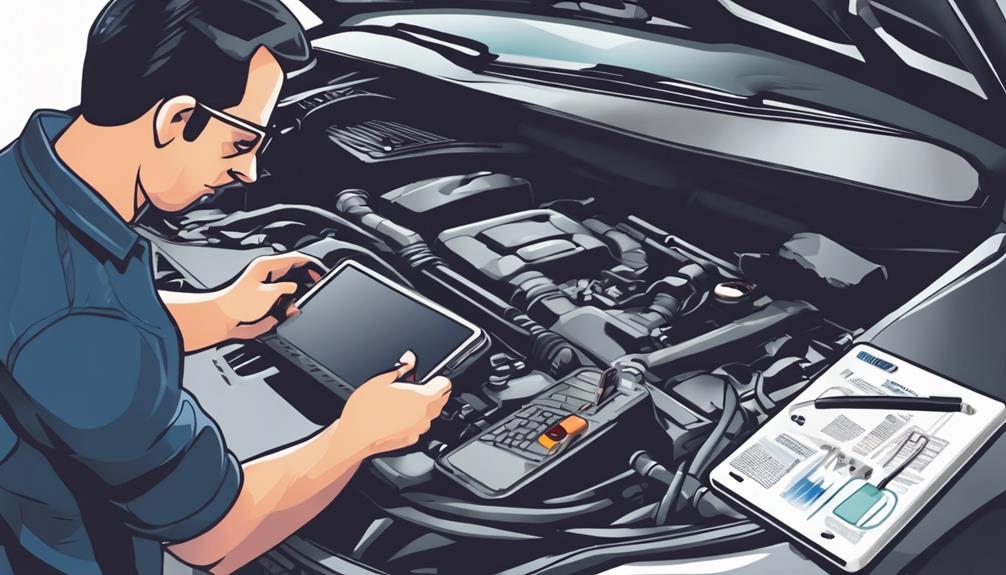
To accurately diagnose the issues indicated by the check engine light, utilizing a scan tool is essential for retrieving Diagnostic Trouble Codes (DTCs). These codes provide insights into specific problems within your vehicle's systems, such as issues with the oxygen sensor, catalytic converter, or emissions system. Professional mechanics can interpret these codes to pinpoint the exact problem triggering the check engine light. Here is a table outlining common troubleshooting techniques and diagnostic tools used in diagnosing check engine light issues:
| Troubleshooting Techniques | Diagnostic Tools |
|---|---|
| Visual inspection of engine components | OBD-II Scan Tool |
| Checking for loose connections or damaged wires | Multimeter |
| Testing sensors for proper functioning | Smoke Machine |
| Reviewing recent vehicle history for clues | Code Reader |
| Conducting component-specific tests | Oscilloscope |
Passing Emission Test Tips
Inspecting your vehicle's emission control system thoroughly before an emissions test is crucial for ensuring compliance and identifying potential issues proactively. To improve your chances of passing the emissions test, consider the following tips:
- Regular Vehicle Maintenance: Keeping up with maintenance tasks like oil changes can positively impact your vehicle's ability to pass the test.
- Drive 100-200 Miles After Maintenance: Driving this distance after maintenance or battery replacement can reset the OBD system, leading to better test performance.
- Maintain Proper Tire Pressure: Proper tire pressure not only enhances vehicle stability but also improves emissions test results.
- Use Fuel Additives: Using fuel additives may help dislodge carbon deposits in the engine, potentially aiding in passing the emissions test.
- Warm Up Your Vehicle: Before the test, make sure to warm up your vehicle. This will optimize engine performance, increasing the likelihood of passing the emissions test while meeting emission standards.
Common Car Repair Solutions
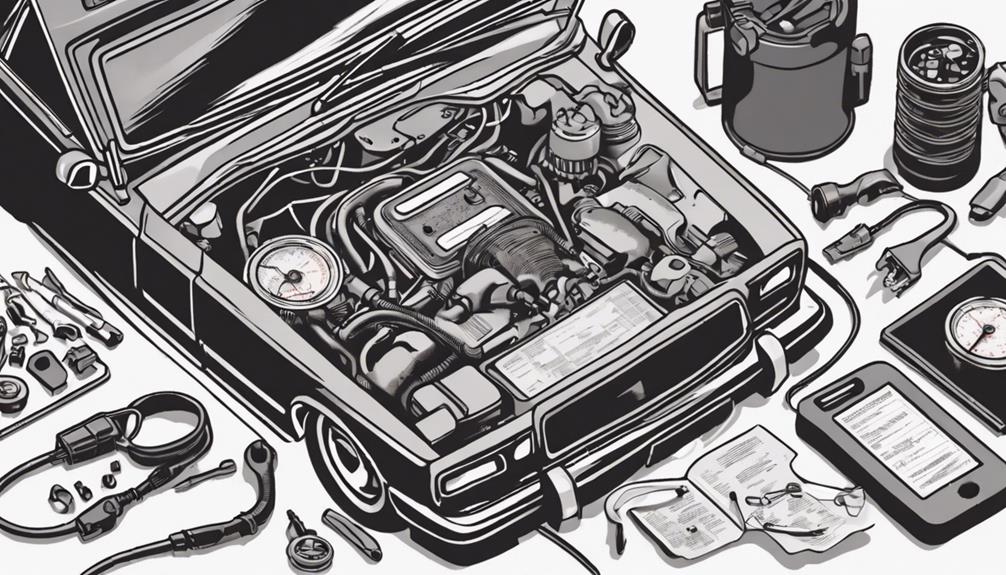
Regular maintenance tasks, such as oil changes and spark plug replacements, frequently serve as effective solutions for resolving issues related to the check engine light.
Troubleshooting techniques involve addressing common culprits like the oxygen sensor, catalytic converter, or ignition coils.
Maintenance strategies include cleaning or replacing the mass airflow sensor or fuel injectors to enhance engine performance and potentially extinguish the check engine light.
Checking and tightening the gas cap can sometimes rectify the check engine light due to an evaporative emissions system leak.
Additionally, replacing a faulty thermostat or addressing issues with the EGR valve are common solutions to check engine light problems.
By understanding these common car repair solutions, you can efficiently tackle check engine light issues and ensure your vehicle runs smoothly.
Frequently Asked Questions
Is It Possible to Pass Emissions With Check Engine Light On?
If the check engine light is on, passing emissions standards becomes challenging. Prioritize vehicle maintenance and engine diagnostics. Ensure emission readiness to improve your chances of passing. Seek professional help if needed for accurate repairs.
Can You Pass Illinois Emissions Test With Check Engine Light On?
You can't pass the Illinois emissions test with the check engine light on. Ensure your vehicle is in top shape by addressing any issues triggering the light. Neglecting car maintenance will lead to a failed emission inspection.
How Do I Fix My Check Engine Light for Emissions?
To fix your check engine light for emissions, utilize diagnostic tools to pinpoint the issue. Seek guidance from a qualified technician for emission system maintenance. Promptly address recommended repairs to ensure compliance and pass tests successfully.
Is a Check Engine Light an Automatic Fail?
When the Check Engine Light illuminates, it serves as a red flag for potential issues affecting emission standards. Proper vehicle diagnostics are essential to unravel the problem efficiently and ensure compliance. Addressing it promptly prevents unnecessary failures.
Conclusion
In conclusion, understanding the Check Engine Light and passing emission tests is vital for maintaining your vehicle's performance and compliance with regulations.
By promptly addressing issues indicated by the light, you can prevent costly repairs and ensure your car passes emissions tests with flying colors.
Remember, taking care of your vehicle's emissions system isn't just important, it's absolutely crucial for the longevity and efficiency of your car.




